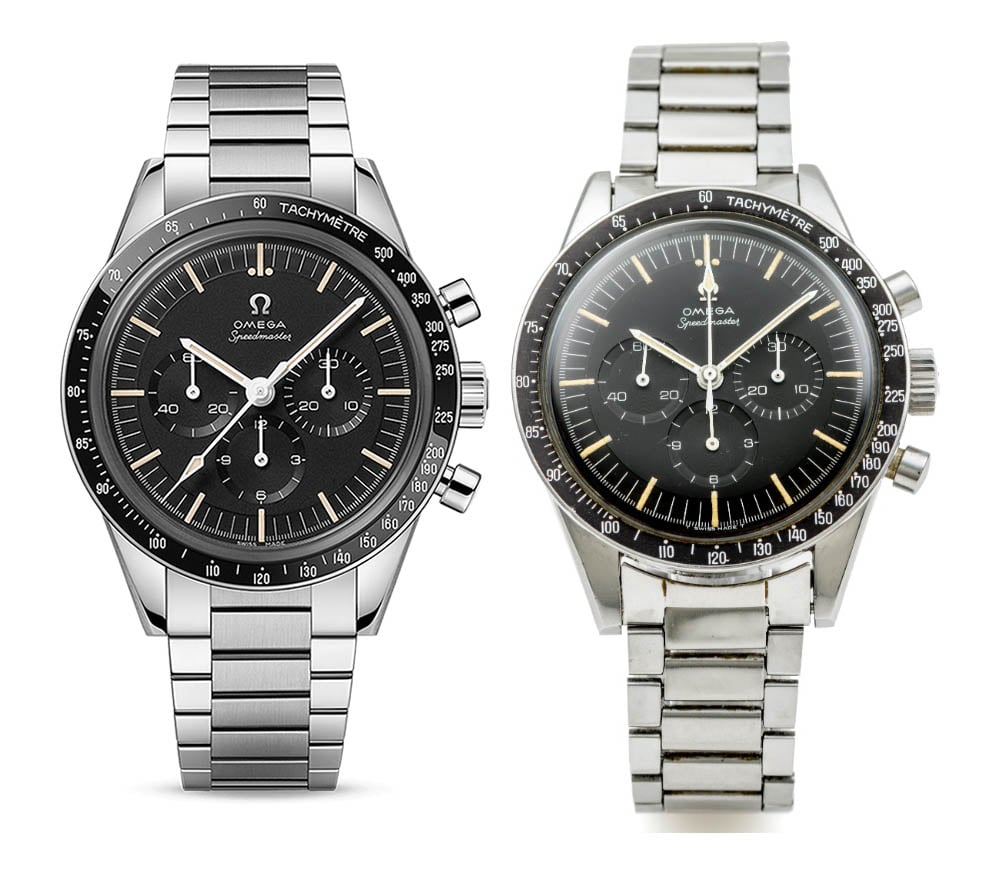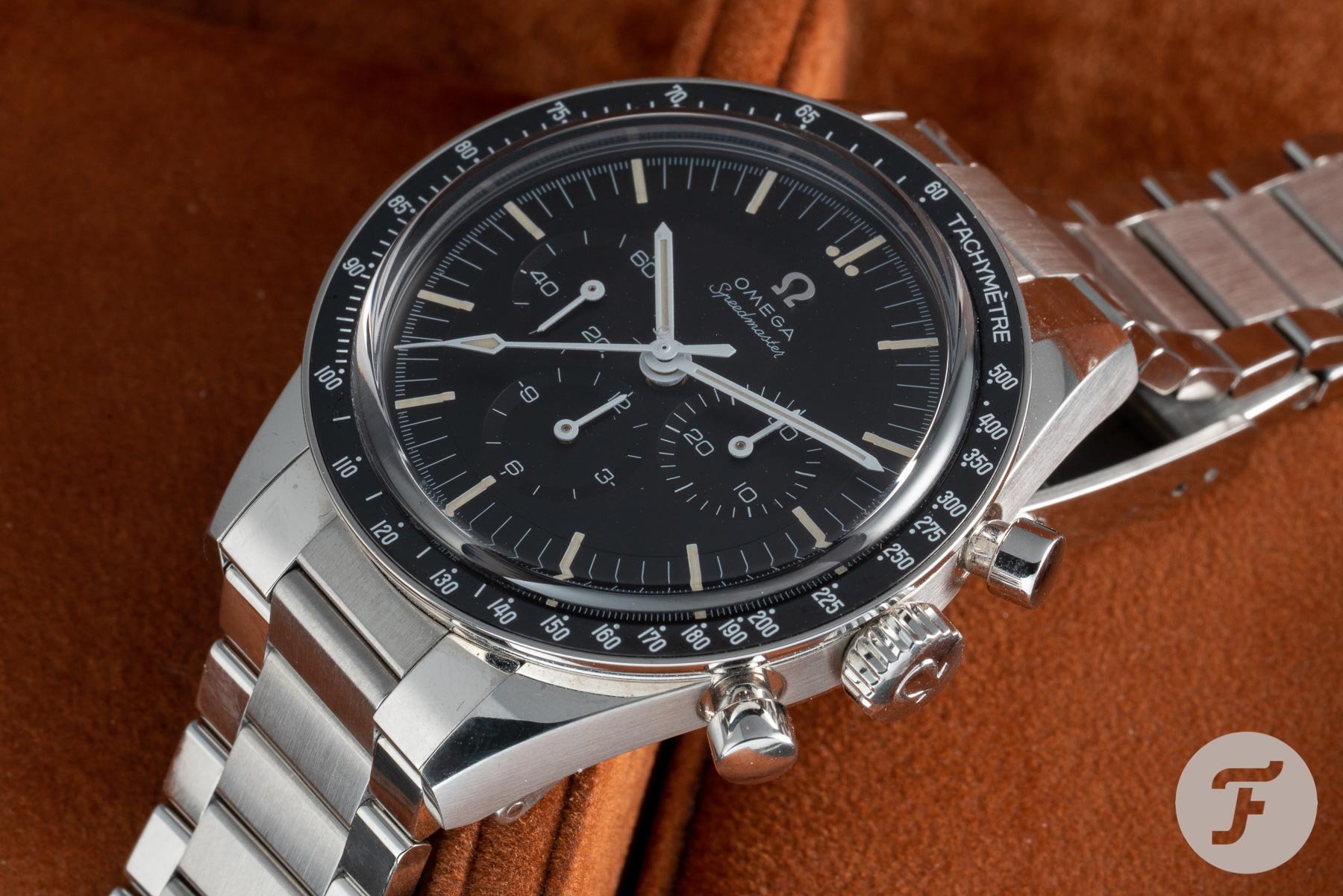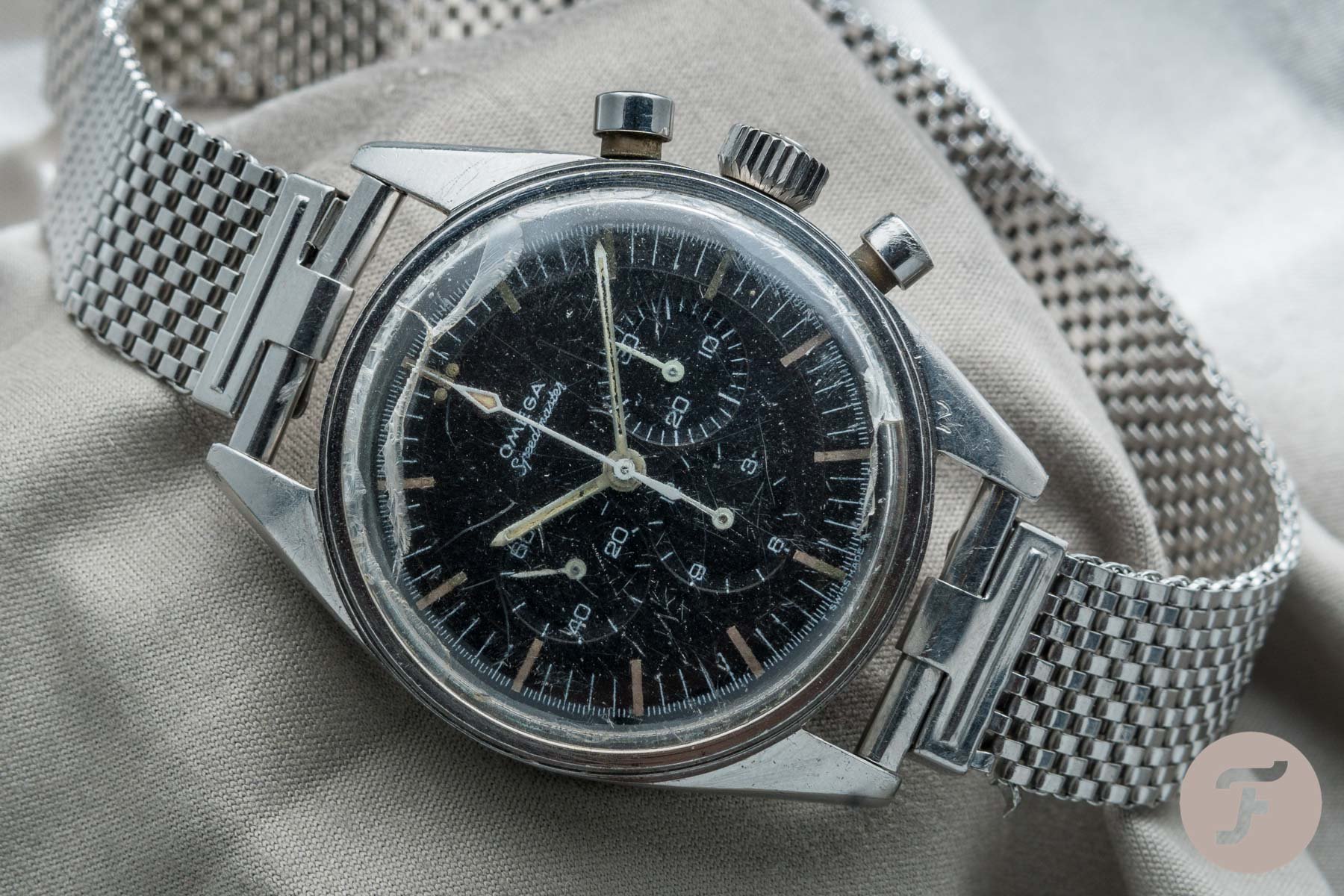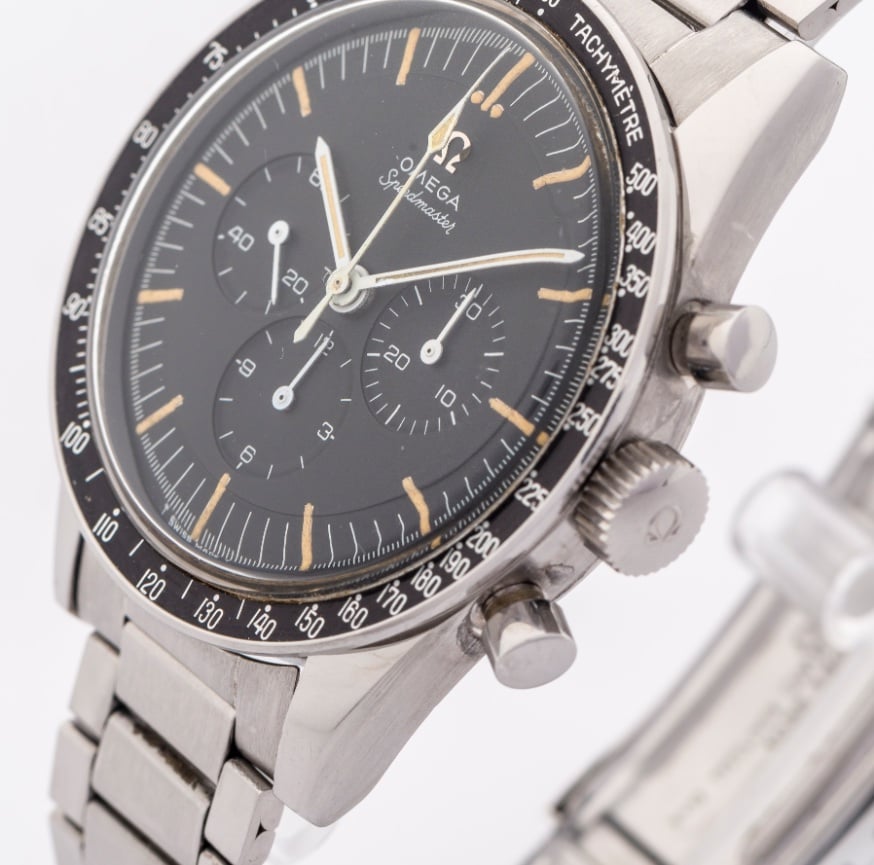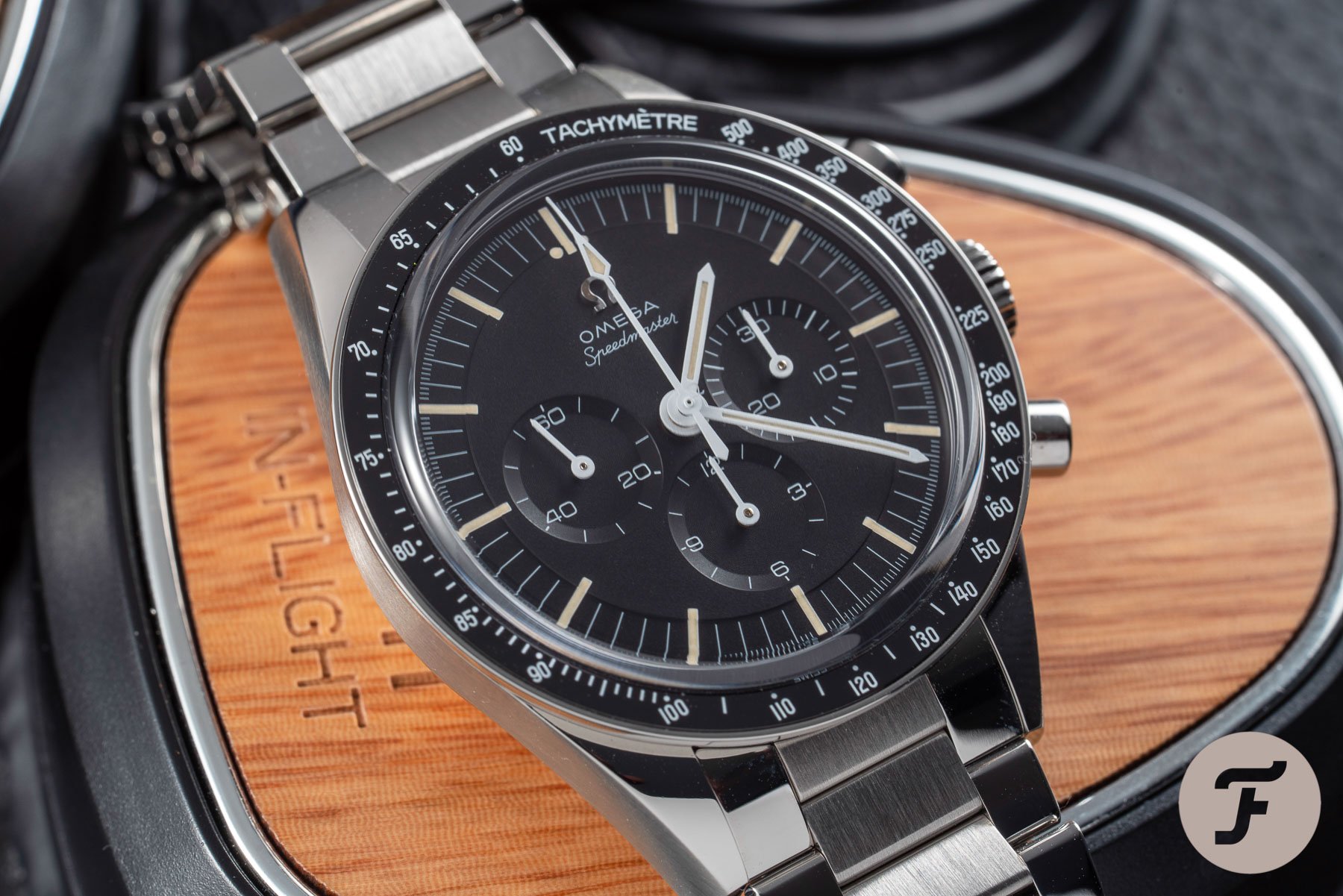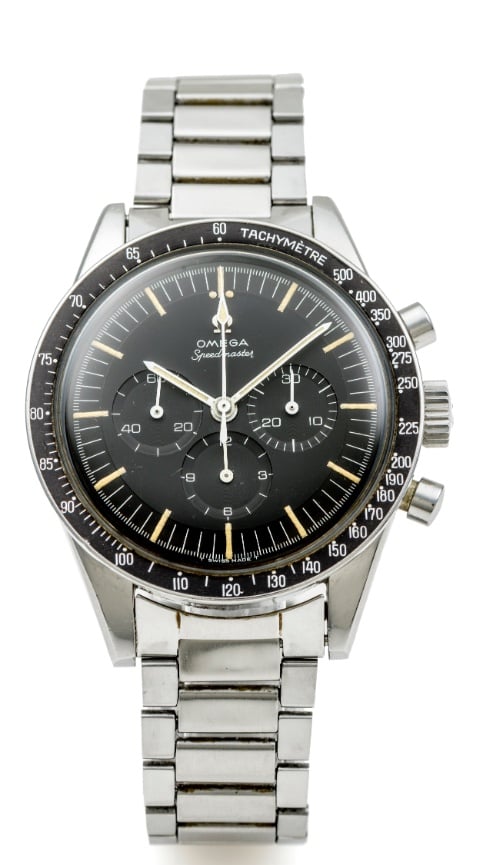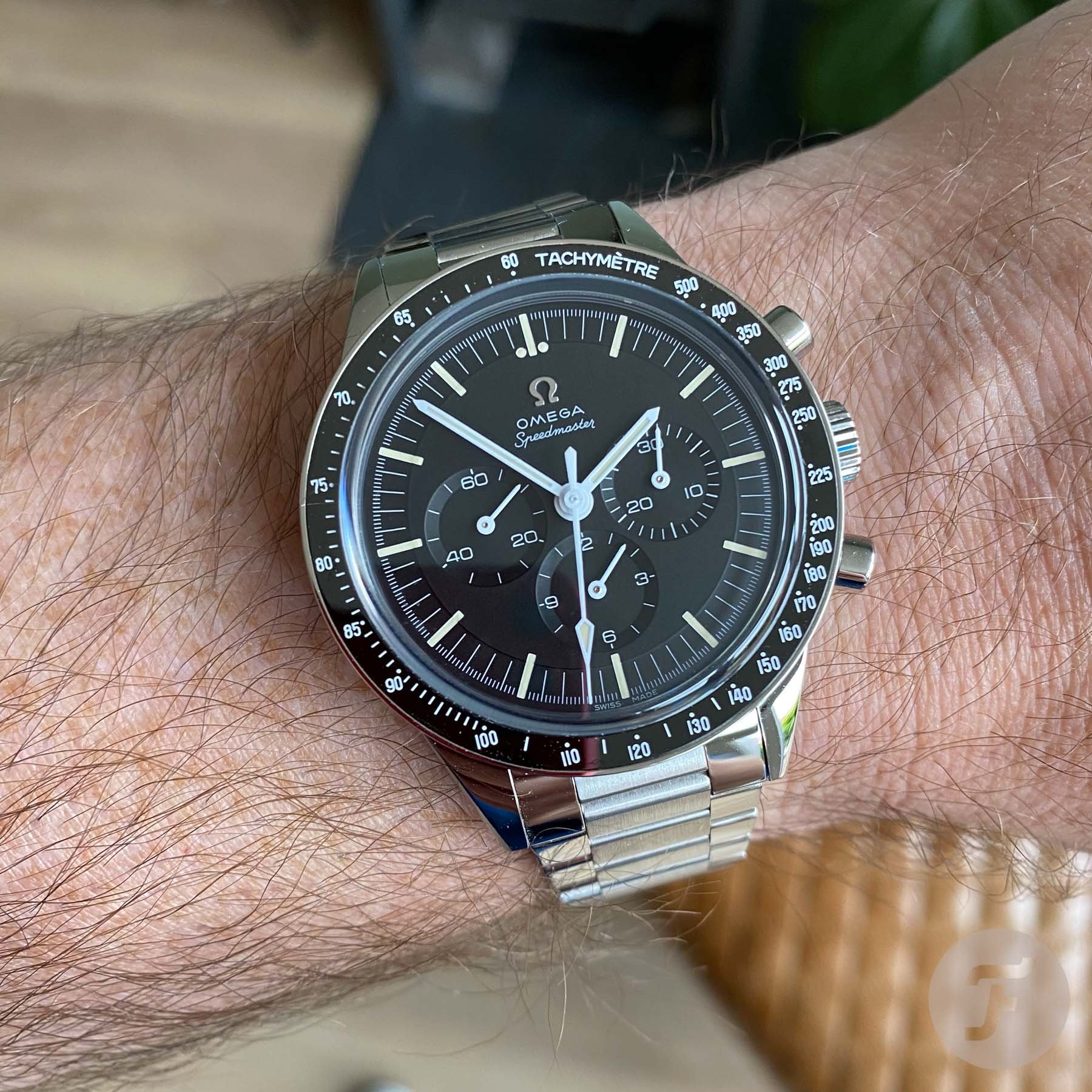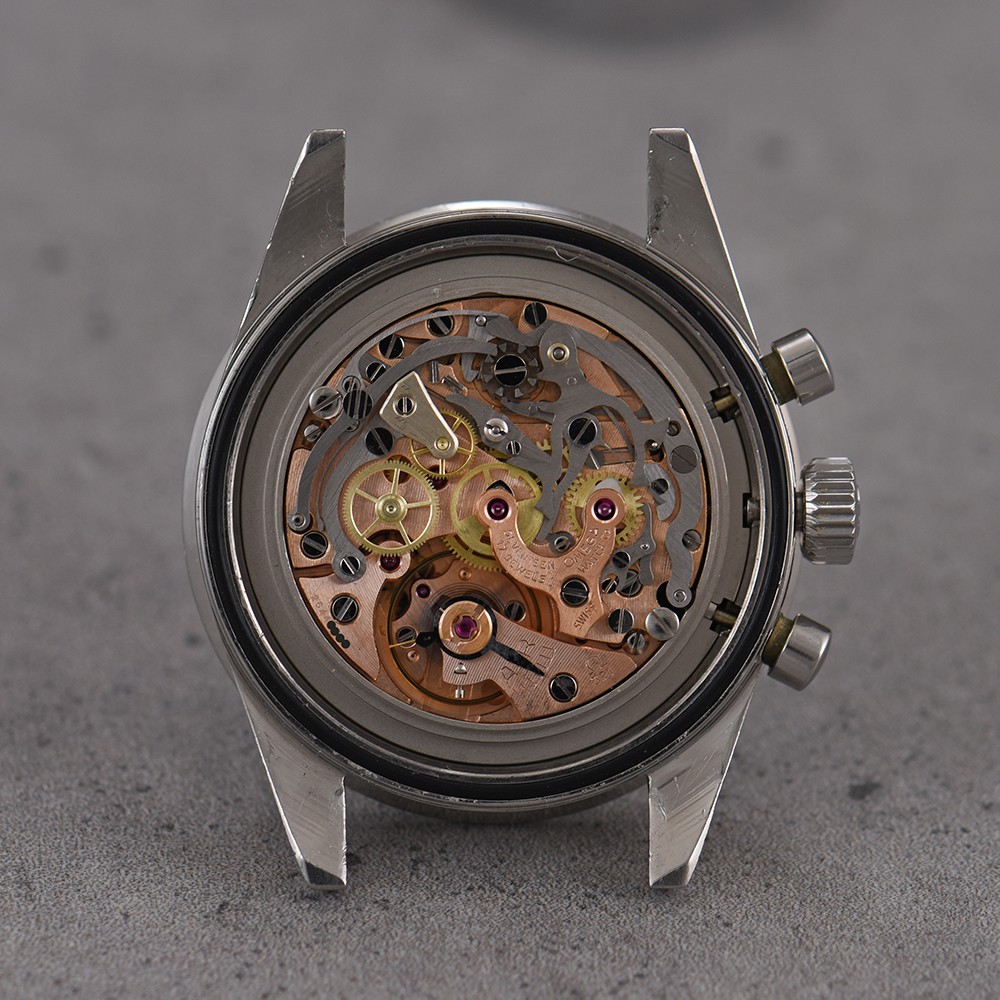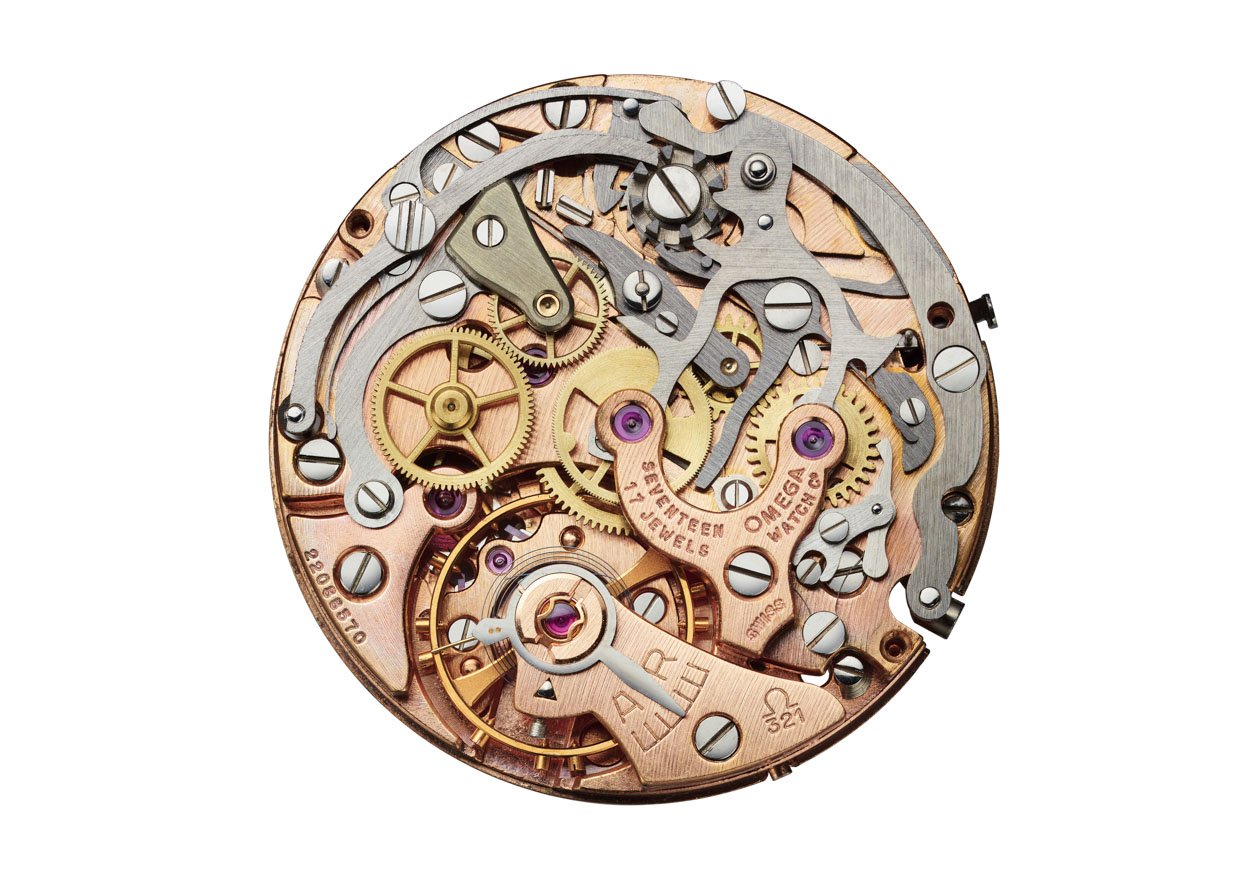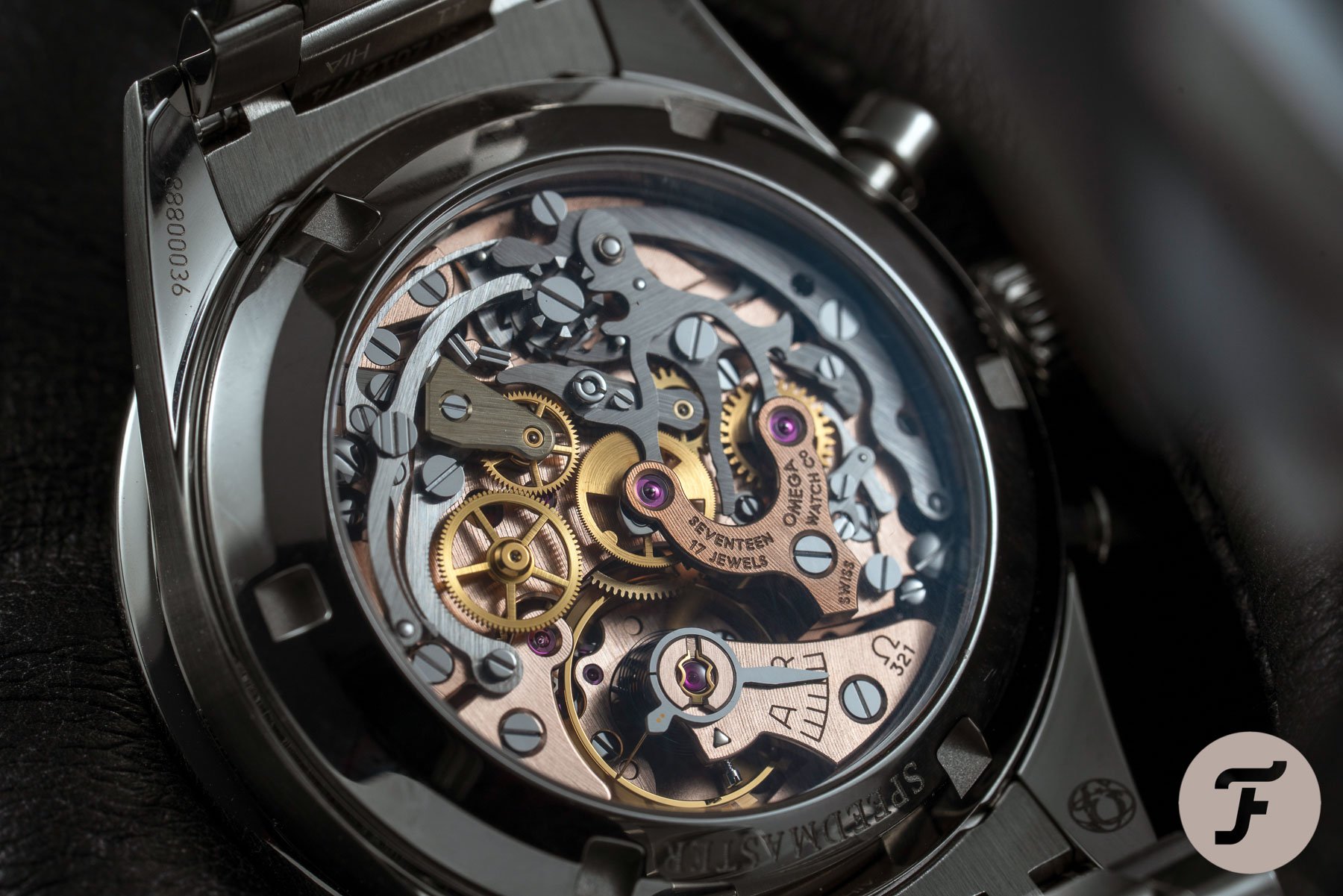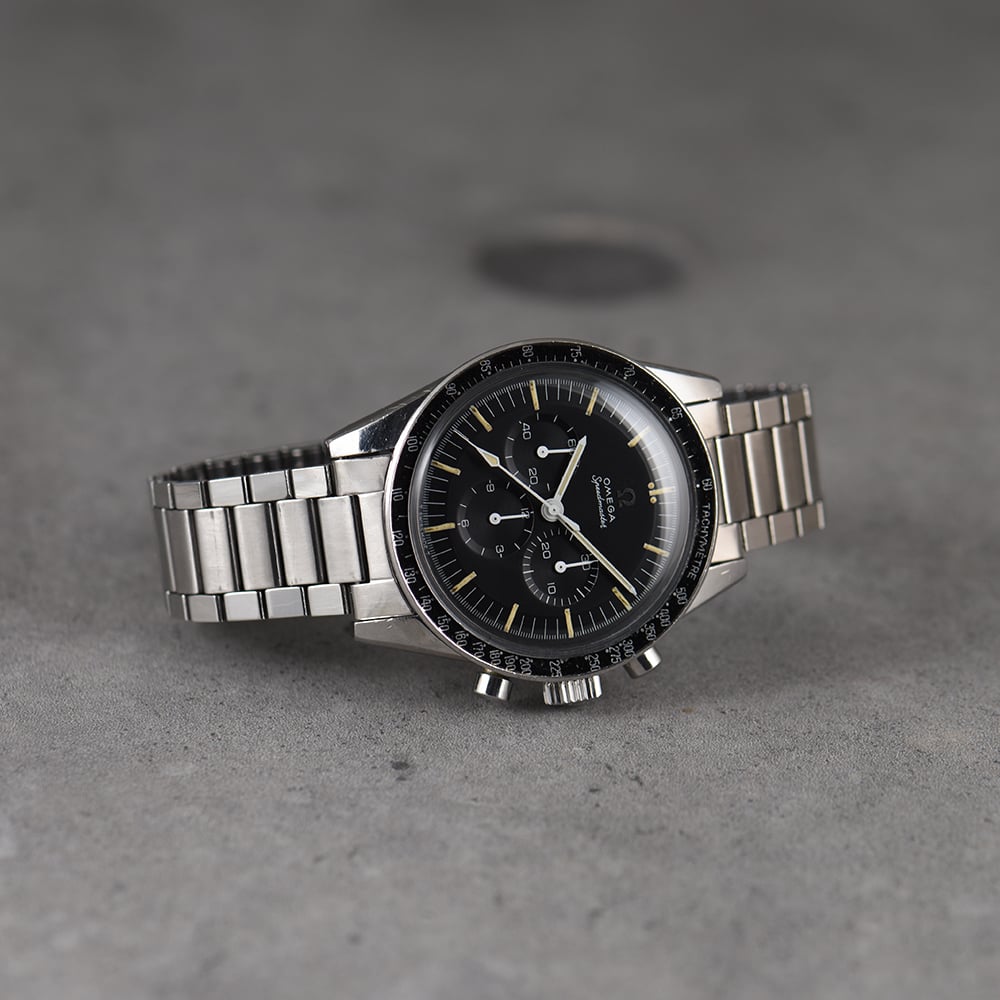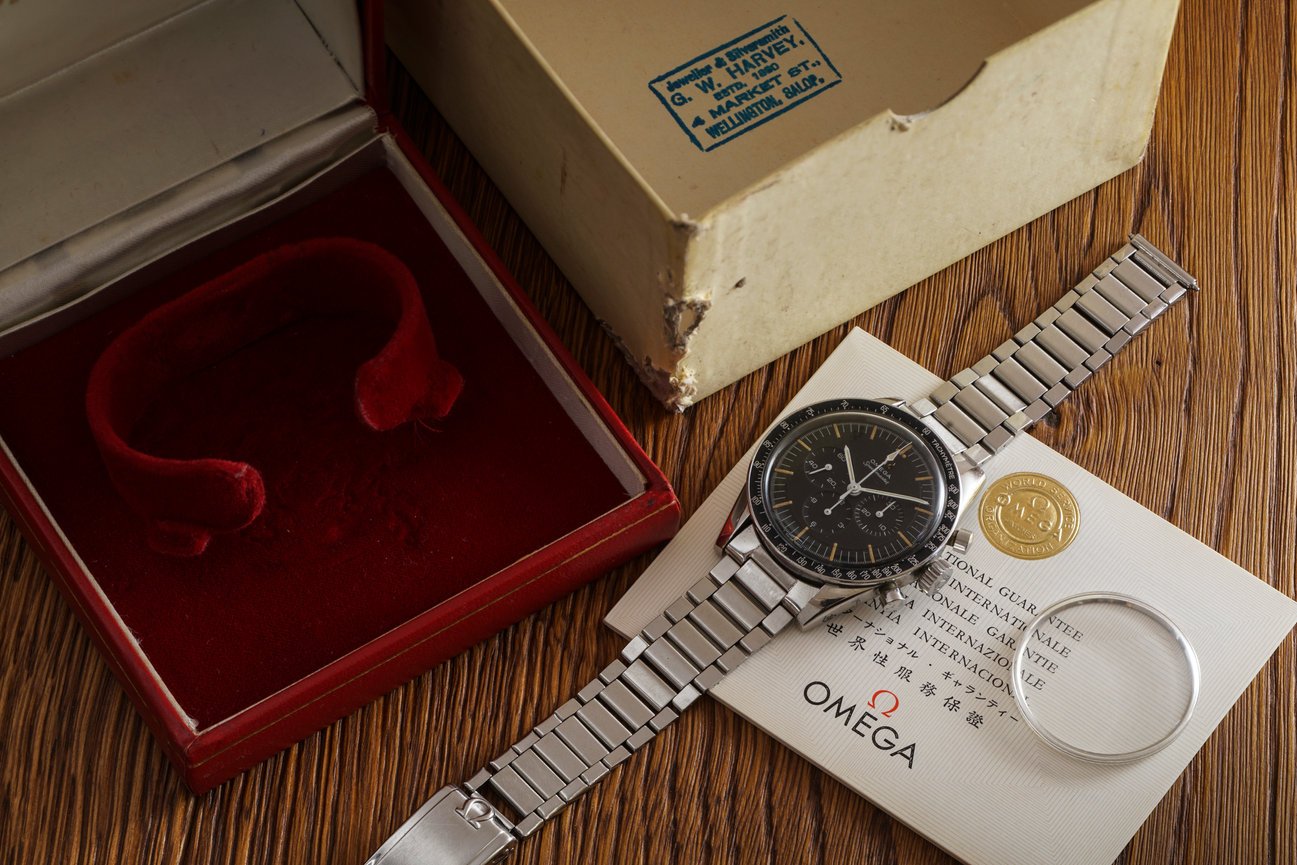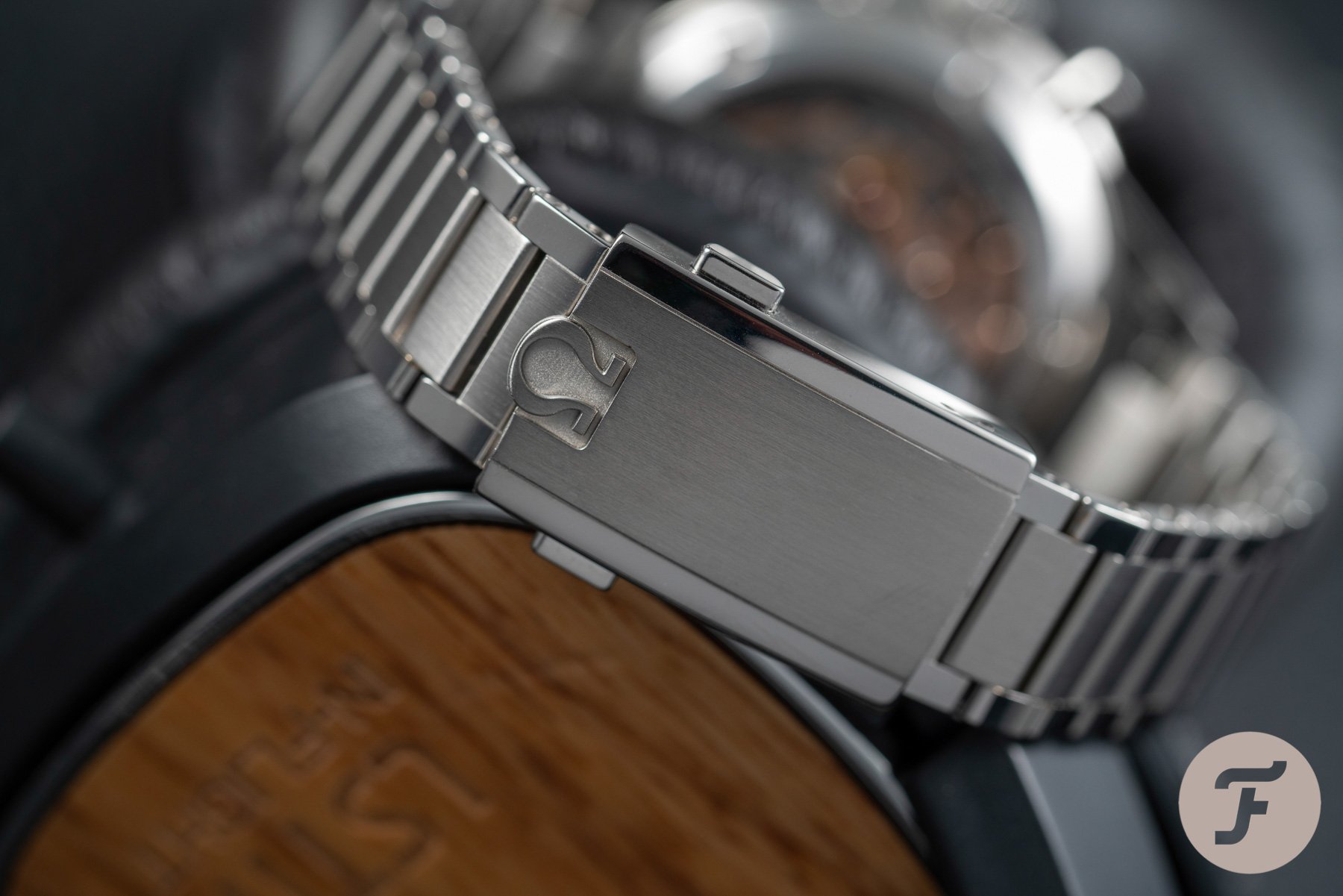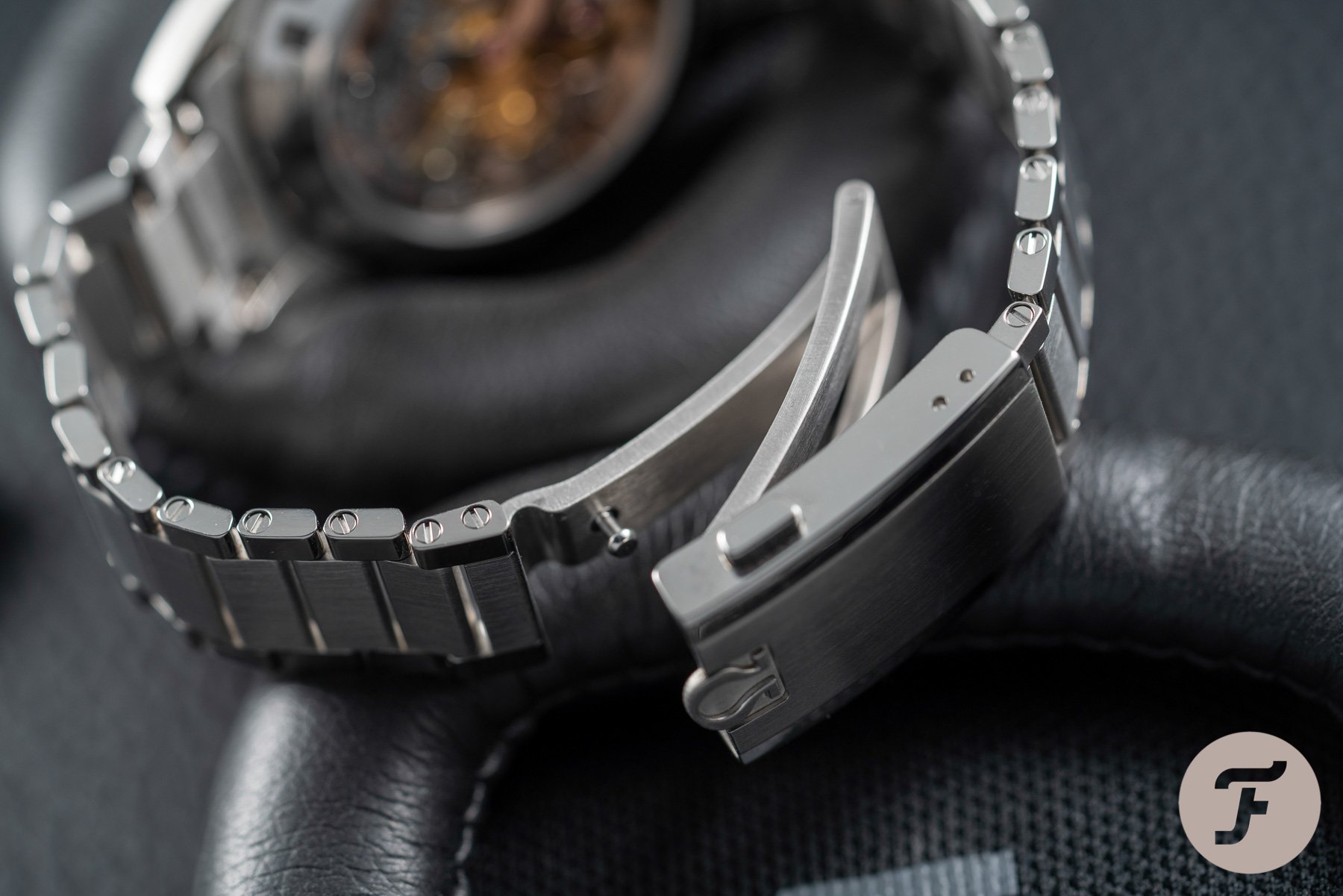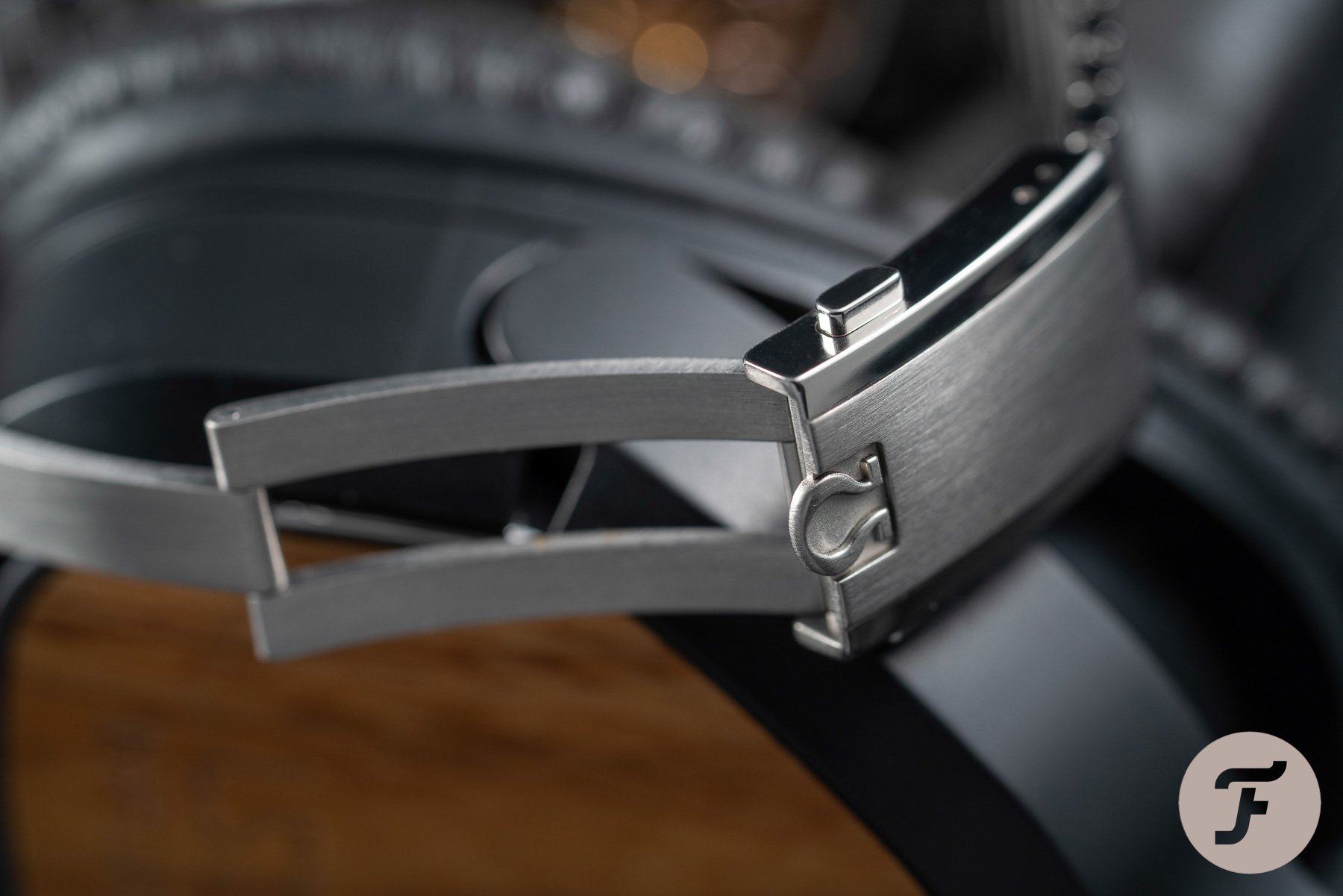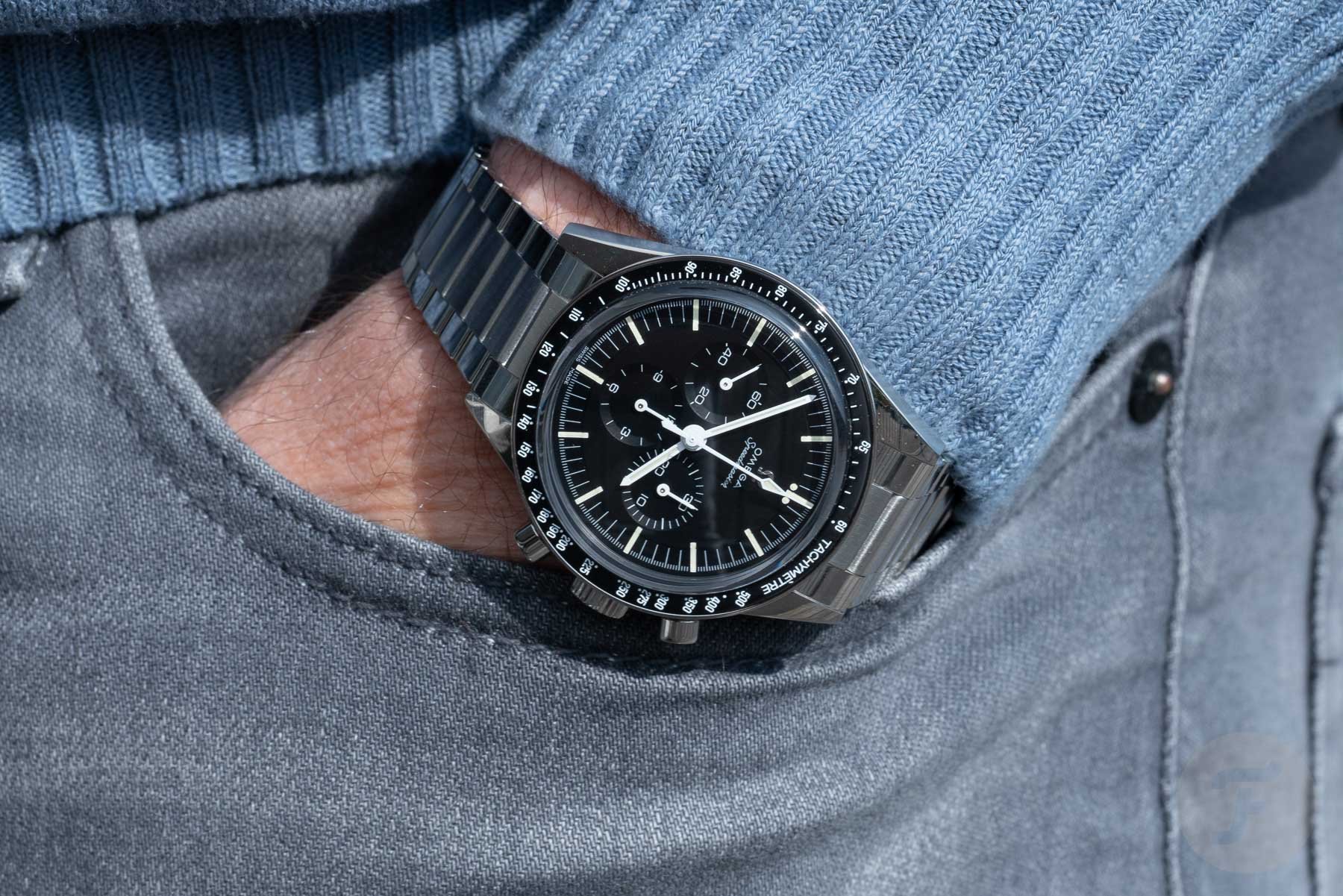How Does the Speedmaster Calibre 321 Compare To The Original 105.003
One of the most heard comments on the Omega Speedmaster Calibre 321 is that you could also opt for an original 1960s Speedmaster reference 105.003. That’s the reference the 2020 Speedmaster Calibre 321 has been based on.
Whether you prefer a vintage Speedmaster 105.003 over the new Speedmaster Calibre 321 reference 311.30.40.30.01.001, that’s a different discussion. It is mainly a matter of preference and opinion on watch collecting & buying. If you want the real thing, the Speedmaster Calibre 321 might not cut it for you. If you don’t want the hassle of finding an original 105.003 that has not been tampered with or are afraid to damage it while wearing it, the new Speedmaster Calibre 321 might be your best pick. Convincing someone otherwise, is of little use, in my opinion. Buy what you like and what makes you feel best. The discussion is a nice one to have with a glass of beer (or wine) and some bitterballs, but it hardly is useful in an article to persuade you into the one or the other camp.
This article is to show you how the Speedmaster Calibre 321 compares to its inspiration, the Speedmaster reference 105.003 “Ed White”.
Speedmaster Calibre 321 vs 105.003
Omega’s Speedmaster 105.003 is the third generation Speedmaster (CK2915 being the first, and CK2998 being the second). Between the CK2998 and 105.003 references, there briefly was a transitional reference 105.002. However, at the start of its production, the 105.002 was merely a CK2998 using the new reference number coding system and only produced for just over a year, starting at the end of 1962. The later 105.002 watches, produced in early 1964, were equipped with white baton hands instead of leaf-shaped hands.
The 105.003, the third generation of Speedmasters, was introduced in 1964 as well. The 105.003 was the last generation with straight-lug cases. Interesting to know, is that the center case of the first three Speedmaster generations, meaning from the CK2915 till the 105.003, were all the same. These cases measure 38.2mm in diameter, and it’s the type of bezel that makes the watch measure either 38.6mm (steel bezels on the CK2915) or 39.7mm (black aluminum bezels) overall.
What is even more interesting, in my opinion, is that you will see straight-lug cases with and without facets on the lugs. Where the Speedmaster’57 60th-anniversary model had faceted lugs, they are absent on the new Speedmaster Calibre 321 watch. How come? Well, according to Omega, the original 105.003, or the two other straight-lug case generations, were never initially shipped with facets on the lugs. It wasn’t until these watches came back for service, that it was decided that Omega would put facets on them. An awkward situation, to be honest, but that’s how these things went down back in the day.
Anyway, by using tomography on an original 105.003, the one used by Gene Cernan during Apollo 17 to be precise, the new Speedmaster Calibre 321 uses the same dimensions and shapes. This includes the shape and size of the crown and pushers.
Omega got the details correct on the Calibre 321
The most obvious differences between the Omega Speedmaster Calibre 321 reference 311.30.40.30.01.001 and the original reference 105.003 are on the crystal, bezel, and case back. The new Calibre 321 uses a sapphire crystal instead of Hesalite (plexiglass), a ceramic bezel insert instead of aluminum, and it has a see-through case back instead of a solid steel case back.
On the ceramic bezel, you will find the same scale (Dot-over-90 and dot-diagonal-70) as on the original 105.003 bezels. There’s the “È” and the flatted “A” in Tachymètre. The only minor difference I can find is that the middle stroke of the “E” has the same length as the upper and lower stroke, while on the original 105.003 bezels, the middle stroke is a little shorter. Regarding the sapphire crystal, Omega took the extra step to have the famous Omega logo in its center. This is something we normally only see in the Hesalite crystals. But Omega decided to have a laser etched logo in the sapphire crystal as well. Despite the case back of the Speedmaster Calibre 321 being quite different due to the sapphire crystal, it still has the extra bevel, like the original.
Location of the Swiss Made printing
The step dial of the Speedmaster Calibre 321 is nearly identical to the original 105.003 dials. With the new watch, they tried to give it a little bit of a vintage touch by making the hour markers a little off-white. But much less than on the product shots on the Omega website. The typography and logo are identical to the original 105.003, a job well done.
The major difference is in the printing of Swiss Made. Or better said, the position of the words Swiss Made. The Speedmaster reference 105.003 can be found using “T SWISS MADE T” as well as “SWISS MADE” in the case of earlier serial numbers. It was a bit closer to the markers and the words were also closer to each other than on the new Speedmaster Calibre 321.
Second-generation caliber 321
If we take a closer look at the movement of the modern Speedmaster Calibre 321, you will see that it is based on the exact same caliber 321 that was inside the 105.003. Meaning it was a second-generation caliber 321. The original caliber 321 had a few iterations, where the main differences between them can be found in the design of certain components.
The movement inside Gene Cernan’s 105.003 was, of course, also a second-generation caliber 321. Based on the tomography of this movement, Omega was able to create CAD files for the production of the new 321 movement. The easiest way to identify a caliber 321 “second generation” is the shape of the clutch bridge. In the pictures, you can identify this part by its material: German silver. On the first iteration (and a “transitional” iteration), this shape used to be symmetrical.
The second iteration, and thus the new Calibre 321, has an asymmetrical shape. The difference between the second generation caliber 321 and the new movement, is in the finishing. Where the original caliber 321 (all iterations) has this copper-colored finish, the new movement has a Sedna gold plating. The color comes somewhat close, but definitely not the same.
The biggest difference is in the bracelet
The most obvious difference between the Omega Speedmaster 105.003 and Speedmaster Calibre 321 is the bracelet. The Speedmaster 105.003 has been delivered on several references when it comes to bracelets. The first was delivered on the 7912 (with ref.6 endpieces). These were also used on some of the Speedmaster reference CK2998 iterations. The other commonly used bracelet was the 1035 reference, with ref. 506 endpieces.
Then, apparently, there was also a very rarely seen reference 1501-1035 bracelet with ref. 6 endpieces. The end-links (or lug-width) of the 105.003 is 19mm instead of the later used 20mm for the asymmetrical Speedmaster cases.
The new bracelet (reference STZ012777) is an amazing piece of work and received a lot of praise from Speedmaster enthusiasts. I myself included, as I think it is one of the best Speedmaster bracelets Omega has done so far. It is more solid than the original flat-link bracelets from the 1960s. It also lacks the flexible spring-loaded links, of course. The aesthetics are very similar though, a brushed center link and polished outer links. But of course, all links are now solid instead of folded and the clasp is much more substantial.
The links of the new STZ012777 bracelet use screws and the clasp has two release buttons. Inside the clasp, you will find two positions for the last link. This enables you to resize it to 1/3rd or 2/3rd of a full link. Although an easy adjustment would come in handy according to many of you, I rarely adjust any of my bracelets. This might also have to do with the climate you’re in.
Sapphire and Ceramic versus Plexi and Aluminum
Overall, the similarities between the original Speedmaster 105.003 and the modern Speedmaster Calibre 321 are evident. The sapphire crystals (two) and solid bracelet make the new reference a bit heavier than the vintage 105.003. In terms of aesthetics, I believe that Omega did a tremendous job in respecting the original design of the 105.003 “Ed White” and went further than they ever did for a re-creation of a historical watch. Some might say it is a pity Omega did not opt for a Hesalite crystal and a bezel with an aluminum insert. Others prefer a scratch-resistant crystal and bezel for a watch they want to wear every day.
The retail price of the Speedmaster Calibre 321 should not be the deciding factor whether you want to own the modern watch or the vintage 105.003. As I wrote at the beginning of this article, it is mainly a matter of preference. There’s little need (or use) in convincing others in purchasing one or the other. I am of the opinion that Omega did a great job on the re-creation of the straight-lug Speedmaster with caliber 321. Especially if this is a watch you want to wear on a daily basis.
The retail price of the Speedmaster Calibre 321 (€14,000 / $14,100) and you can find more information here.

